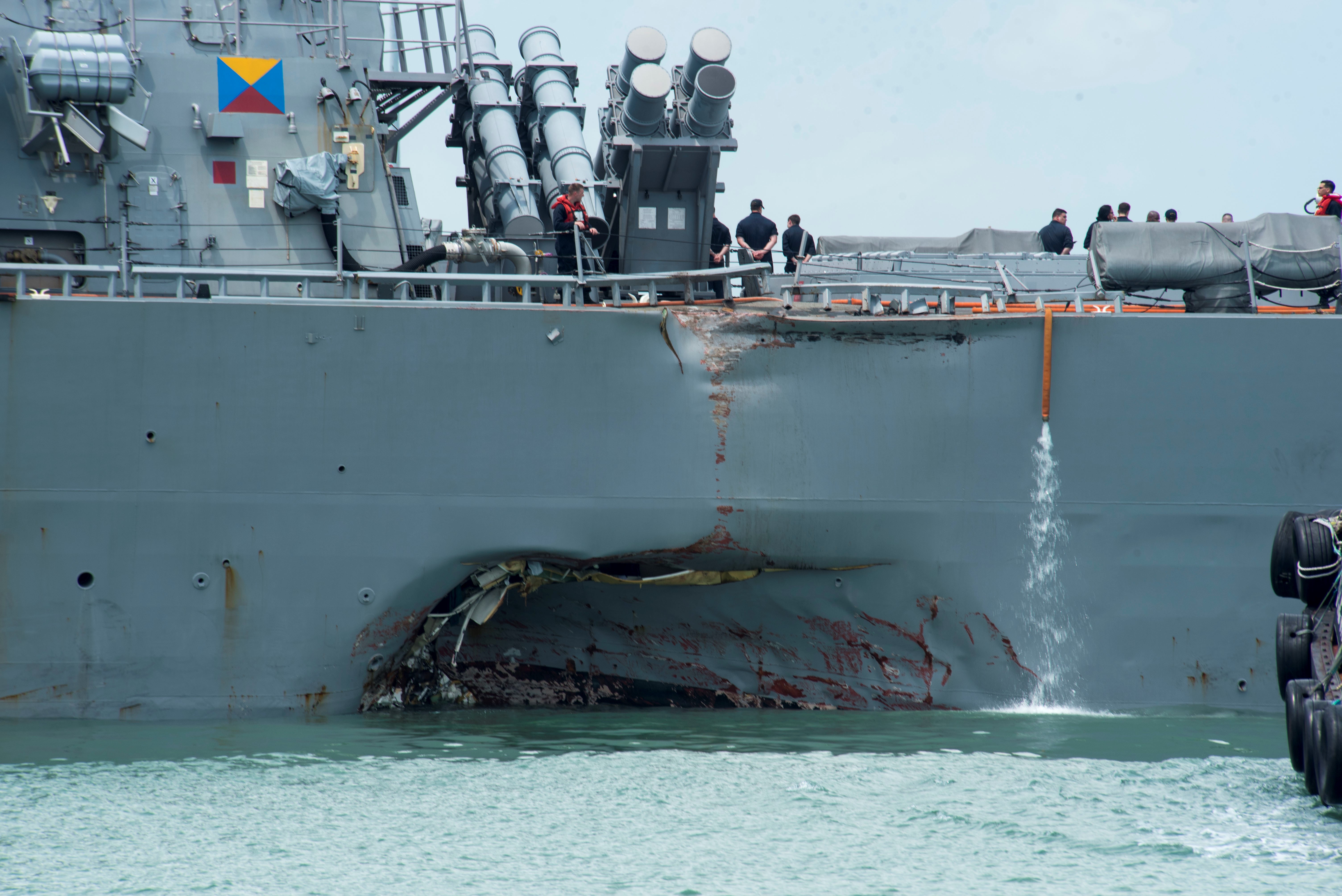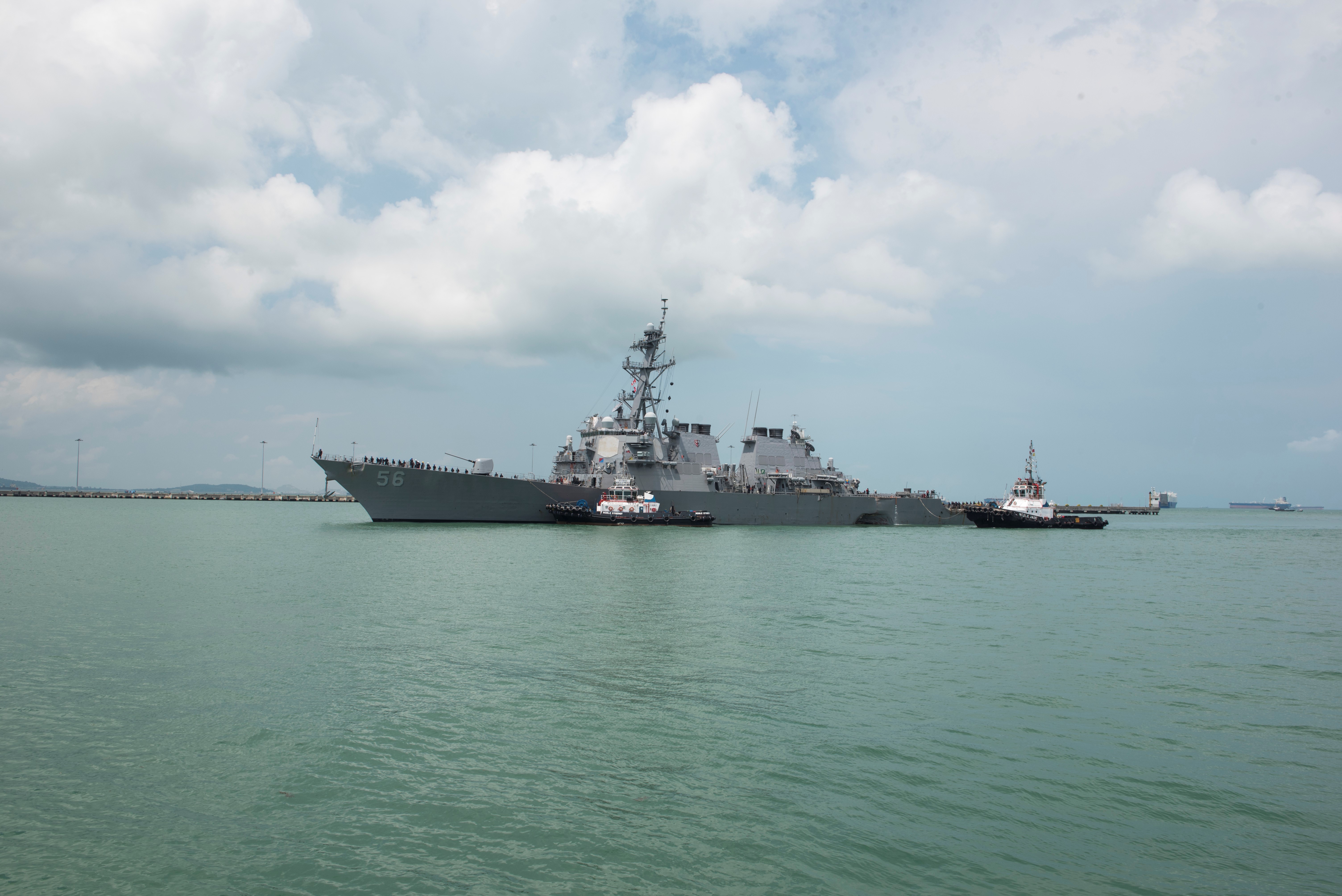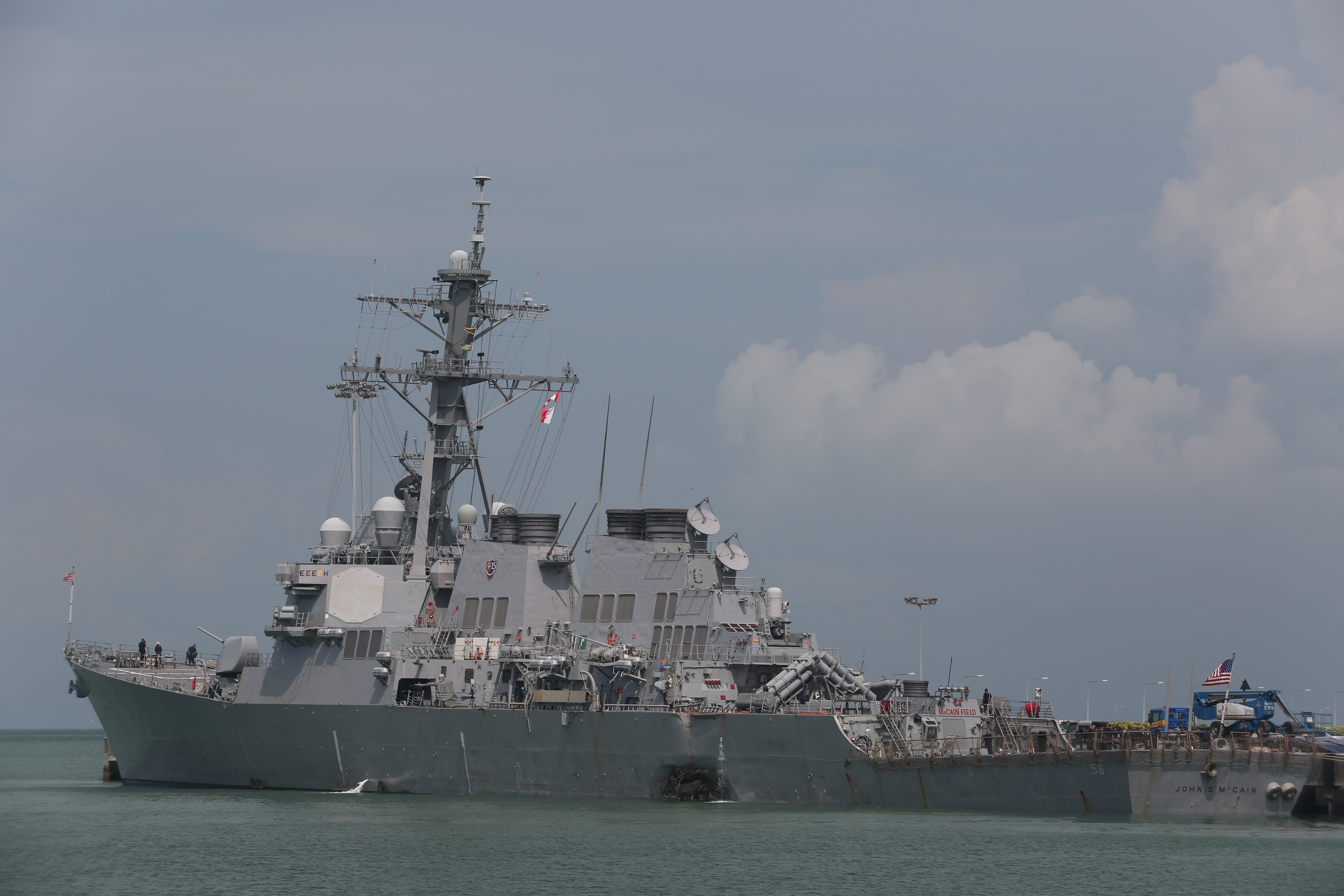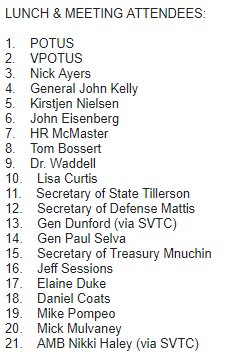North Korea vows merciless retaliation in response to drillsFNC: President Trump is pictured looking out over a Guam graveyard cluttered with crosses in a photoshopped image from the newest propaganda film — and grim warning — from North Korea.
The regime followed the video with a statement posted through its KCNA news agency, saying Trump “spouted rubbish” and frequently tweeted about “weird articles of his ego-driven thoughts” and attacking South Korea’s “puppy-like” Defense Minister Song Young-moo for “pinning hope on that mad guy.”
But the picture of a graveyard believed to be in Guam may be the most rattling in the video, given dictator Kim Jong Un’s repeated threats to strike the U.S. territory with a missile. The video also features Vice President Pence engulfed in flames. More here.
United States Files Complaints to Forfeit More Than $11 Million From Companies That Allegely Laundered Funds To Benefit Sanctioned North Korean Entities
WASHINGTON – The United States filed two complaints today seeking imposition of a civil money laundering penalty and to civilly forfeit more than $11 million from companies that allegedly acted as financial facilitators for North Korea, announced U.S. Attorney Channing D. Phillips, Michael DeLeon, Special Agent in Charge of the FBI’s Phoenix Field Office, and Michael J. Anderson, Special Agent in Charge of the FBI’s Chicago Field Office.
The actions, filed in the U.S. District Court for the District of Columbia, represent two of the largest seizures of North Korean funds by the Department of Justice. One complaint seeks $6,999,925 associated with Velmur Management Pte Ltd., a Singapore-based company. The other seeks $4,083,935 from Dandong Chengtai Trading Co. Ltd., also known as Dandong Zhicheng Metallic Material Co., Ltd., a company in Dandong, China.
The lawsuits follow a similar complaint, filed in June 2017, seeking more than $1.9 million from Mingzheng International Trading Limited, a company based in Shenyang, China.
The complaints allege that the companies have participated in schemes to launder U.S. dollars on behalf of sanctioned North Korean entities. According to the complaints, the companies participated in financial transactions in violation of the International Emergency Economic Powers Act (IEEPA), the North Korean Sanctions and Policy Enhancement Act of 2016, and federal conspiracy and money laundering statutes. Today’s complaints are the first filed actions based on the 2016 North Korean Sanctions and Policy Enhancement Act.
“These complaints show our determination to stop North Korean sanctioned banks and their foreign financial facilitators from aiding North Korea in illegally accessing the United States financial system to obtain goods and services in the global market place,” said U.S. Attorney Phillips. “According to the complaints, these front companies are supporting sanctioned North Korean entities, including North Korean military and North Korean weapons programs. Working with our law enforcement partners, we will vigorously enforce vital sanctions laws.”
“The complaints allege that these companies are assisting North Korea in evading sanctions, which is in direct conflict with our national security interests,” said Special Agent in Charge DeLeon, of the FBI’s Phoenix Field Division. “We will continue to use the necessary resources to expose these types of actions and investigate those who utilize the U.S. banking systems for illegal activities.”
**
U.S. v. Velmur Management Pte., Ltd. (Velmur) and Transatlantic Partners Pte. Ltd. (Transatlantic)
This complaint alleges that Velmur and Transatlantic Partners Pte. Ltd. (Transatlantic) laundered United States dollars on behalf of sanctioned North Korean banks that were seeking to procure petroleum products from JSC Independent Petroleum Company (IPC), a designated entity. The complaint also seeks a civil monetary penalty against Velmur and Transatlantic for prior sanctions and money laundering violations related to this scheme.
According to the complaint, designated North Korean banks use front companies, including Transatlantic, to make U.S. dollar payments to Velmur. The complaint relates to funds that were transferred through four different companies and remitted to Velmur to wire funds to JSC Independent Petroleum Company (IPC), a Russian petroleum products supplier. On June 1, 2017, the Department of the Treasury’s Office of Foreign Asset Controls (OFAC) designated IPC. The designation noted that IPC had a contract to provide oil to North Korea and reportedly shipped over $1 million worth of petroleum products to North Korea.
The United Nations Panel of Experts reported in 2017 on the methods used by North Korean banks to evade sanctions and continue to access the international banking system. Specifically, despite strengthened financial sanctions, North Korean networks are adapting by using greater ingenuity in accessing formal banking channels. This includes maintaining correspondent bank accounts and representative offices abroad which are staffed by foreign nationals making use of front companies. These broad interwoven networks allow the North Korean banks to conduct illicit procurement and banking activity.
An FBI investigation revealed that Velmur’s and Transatlantic’s activities mirror this money laundering paradigm. Specifically, companies identified in the complaint and Transatlantic act as front companies for designated North Korean banks.
The government is seeking to forfeit $6,999,925 that was wired to Velmur in May 2017. The U.S. dollar payments, which cleared through the U.S., are alleged to violate U.S. law, because the entities were surreptitiously making them on behalf of the designated North Korean Banks, whose designation precluded such U.S. dollar transactions. The government also is seeking imposition of a monetary penalty commensurate with the millions of dollars allegedly laundered by Velmur and Transatlantic.
**
U.S. v. Dandong Chengtai Trading Co., Ltd. (Dandong Chengtai), also known as Dandong Zhicheng Metallic Material Co., Ltd.
This complaint alleges that Dandong Chengtai and associated front companies controlled by Chi Yupeng, a Chinese national, comprise one of the largest financial facilitators for North Korea. According to the complaint, Dandong Chengtai conspired to evade U.S. economic sanctions by facilitating prohibited U.S. dollar transactions through the United States on behalf of the North Korean Workers’ Party, a sanctioned entity.
The complaint further alleges that the North Korean government relies on exports of coal as its primary means of obtaining access to foreign currency, and that the North Korean military controls the amount of coal produced and its subsequent export. The North Korean government uses proceeds of coal sales to fund its weapons of mass destruction program and missile programs. Coal generates more than $1 billion in revenue per year for North Korea. The investigation revealed that Dandong Chengtai is one of the largest importers of North Korean coal in China, and has continued to engage in illicit U.S. dollar transactions related to its coal sales to benefit North Korea.
The complaint alleges that Dandong Chengtai facilitated wire transfers denominated in U.S. dollars for purchases of goods that are well outside the scope of a mineral trading company. Financial records reveal that purchases of bulk commodities such as sugar, rubber, petroleum products, and soybean oil, among others, were in fact destined for North Korea.
As reported in findings by the Treasury Department and the United Nations Panel of Experts, North Korean financial facilitators frequently establish and maintain offshore U.S. dollar accounts for the purposes of remitting wire transfers denominated in U.S. dollars on behalf of sanctioned North Korean entities. These broad interwoven networks allow sanctioned North Korean entities to conduct illicit procurement and banking activity.
The government is seeking to forfeit $4,083,935 that Dandong Chengtai wired on June 21, 2017 to Maison Trading, using their Chinese bank accounts. The investigation revealed that Maison Trading is a front company operated by a Dandong Chengtai employee. These U.S. dollar payments, which cleared through the United States, are alleged to violate U.S. law, because the recent North Korean sanctions law specifically barred U.S. dollar transactions involving North Korean coal and the proceeds of these transactions were for the benefit of the North Korea Worker’s Party, whose designation precluded such U.S. dollar transactions.
This case relates to a previously unsealed opinion from Chief Judge Beryl A. Howell of the U.S. District Court for the District of Columbia, which found that probable cause existed to seize funds belonging to Dandong Chengtai.
**
The claims made in the complaints are only allegations and do not constitute a determination of liability.
The FBI’s Phoenix Field Office is investigating the case involving Velmur Management Pte Ltd. and Transatlantic Partners Pte., Ltd. The FBI’s Chicago Field Office is investigating the case involving Dandong Chengtai Trading Co. Ltd. Both investigations are being supported by the FBI Counterproliferation Center.
Assistant U.S Attorneys Arvind K. Lal, Zia M. Faruqui, Christopher B. Brown, Deborah Curtis, Ari Redbord, and Brian P. Hudak, all of the U.S. Attorney’s Office for the District of Columbia, are prosecuting both cases. Paralegal Specialist Toni Anne Donato and Legal Assistant Jessica McCormick are providing assistance.










